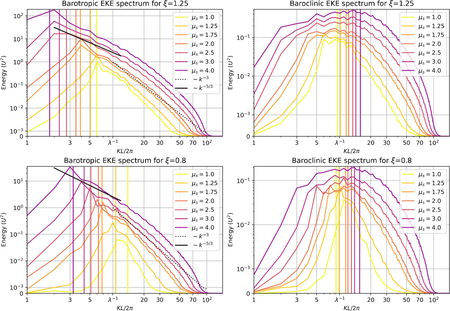Idealized study of how moisture impact the midlatitude atmosphere
CAOS PhD student Marguerite Brown and professors Olivier Pauluis and Edwin Gerber recently published a paper about how moisture gradients and latent heat release impact the energetics of the midlatitude atmosphere. This addresses a gap in the theory of midlatitude dynamics, which has predominantly focused on dry systems. As the moisture content of the atmosphere is expected to increase under climate change, a better understanding of the impact of moisture is necessary to reduce uncertainty about how weather patterns will change.
This study uses an idealized two-layer model of the midlatitudes with simplified moist thermodynamics. This idealized system serves as a basis for characterizing the amount of energy available in the form of water vapor, which can be converted into heat during condensation. In particular, this paper introduces the notion of a Moist Energy characterized by the condensation height of the atmosphere. This Moist Energy is then generated when the turbulent dynamics of the atmosphere redistribute the north-south moisture gradient. As both vertical and north-south moisture gradients increased, the system became more energetic and exhibited motion at both smaller and larger scales than its dry counterpart
As a further simplification, this study looks specifically at a system where surface evaporation is high enough that the system is saturated with moisture and raining everywhere. In the saturated case, the system behaves similarly to the dry system with length and time rescaled. In particular, the largest eddy containing scale could be characterized by a rescaling of the classic result found in Held and Larichev (1996).



